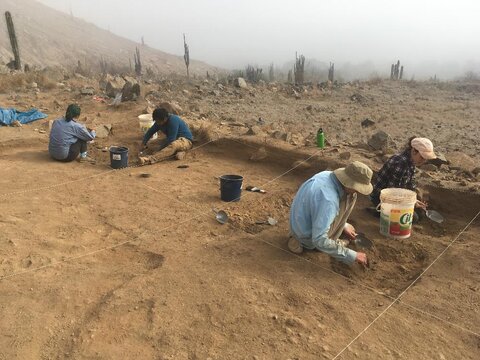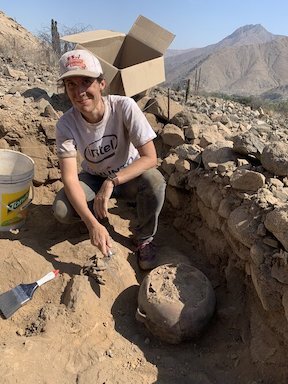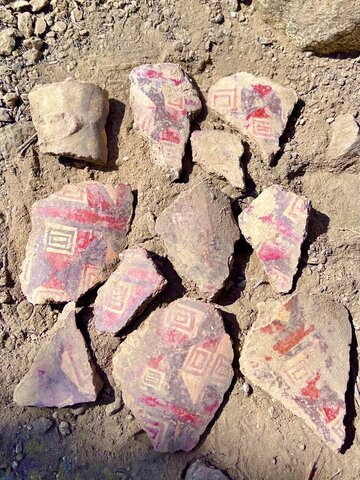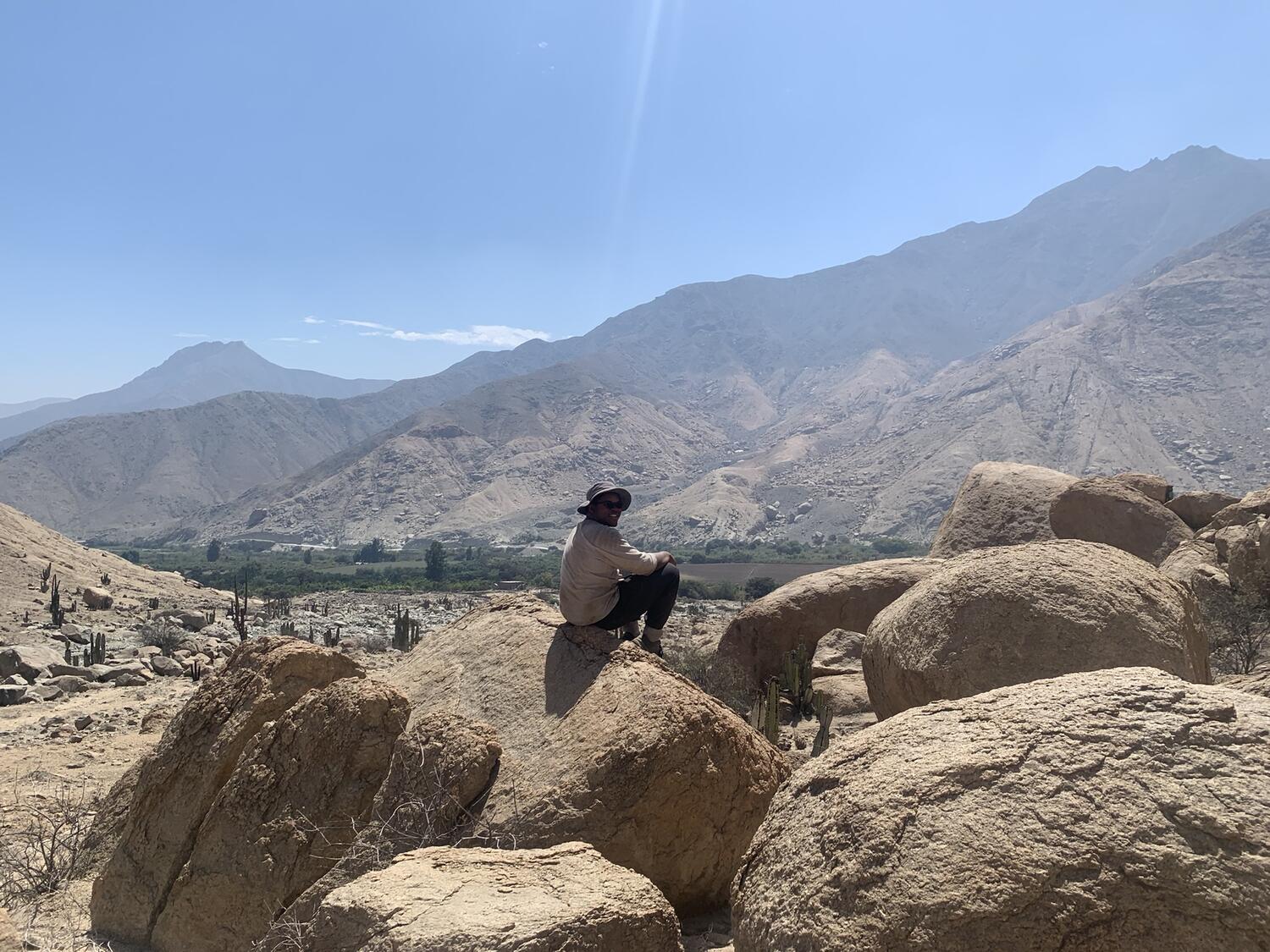LAST 395: Archaeology Field School in Peru
This 3-credit course is an archaeological field school where students have the opportunity to engage in original research at the archaeological site of Cerro Blanco, a Chancay Administrative Center located in central Peru. The course is split into two parts. The first is an 8-week on-campus introduction to Andean archaeology, meeting twice a week in the second half of the spring semester; the second is a 4-week off-camps field school in Peru, where students will take part in the Huanangue Valley Archaeological Project. Students interested in anthropology, economy, political science, social impacts of climate change, environmental sustainability, indigenous ecologies, resource management, or Latin American studies are encouraged to consider this course.
The course is led and taught by Kasia Szremski (pictured left in the field), Associate Director of CLACS and Anthropology PhD. She joined the Center for Latin American and Caribbean Studies in 2016. Prior to coming to UIUC, she was a Lecturer in Anthropology and Pre-Major Academic Adviser at Vanderbilt University, where she also received her PhD in Anthropology in 2015. Kasia is also the director of the Huanangue Valley Archaeological project, which is dedicated to investigating the linkages between intergroup interaction, resource management, and the development of alternative forms of political complexity on the western slopes of the Peruvian Andes.
During the on-campus portion of the course, students meet twice a week for a seminar-style class. Many of these class meetings will take place at the Krannert Art Museum, where students will have a chance to gather the wonderful Andean artifacts held in the KAM collection. They will cover basic problems/debates within Andean archaeology, along with outlining archaeological field methods so that students have the tools necessary to be successful in the field. By the end of this section of the course, students will be able to identify the major chronological periods and cultures in Andean prehistory, outline major debates in Andean archaeology, and understand how archaeologists form research questions and how they investigate those questions.
In the field, students will work together with experienced archaeology students from Universidad Nacional Federico Villarreal. They will receive training in excavation, drone mapping, spatial analysis in GIS, and artifact analysis under the mentorship of Dr. Szremski. In the evenings, students meet for a series of lectures/discussions centered on a weekly theme. The project's long-term goal is to uncover what role Cerro Blanco played in managing interregional trade and how that trade impacted the region.
Special field trips to cultural events important to the region are included in the program, such as visiting Caral, and Las Lomas de Lachay. The field house is based in Sayan, so students will be embedded within the local community and have ample opportunity to practice their Spanish and to engage with local community members.
Additional Notes:
- This course fulfills the LAST major requirement for experiential learning.
- Students must apply for this course; the application deadline is February 28, 2023. You can apply here.
- On campus meetings occur in the second 8-weeks of the spring 2023 semester. Field experience takes place in Peru during the summer.
- There is an additional fee for this course due to the field experience portion. Estimated additional fees are $1,400 - $2,000.



